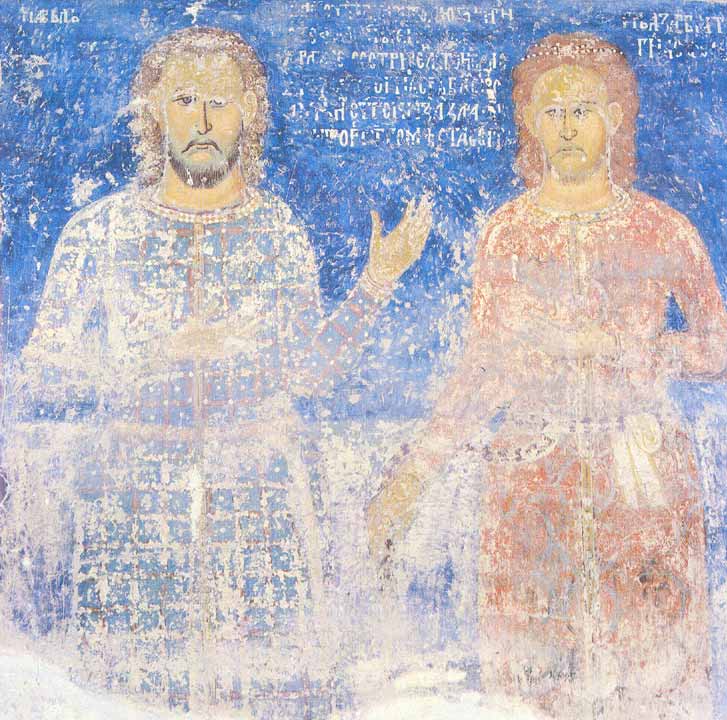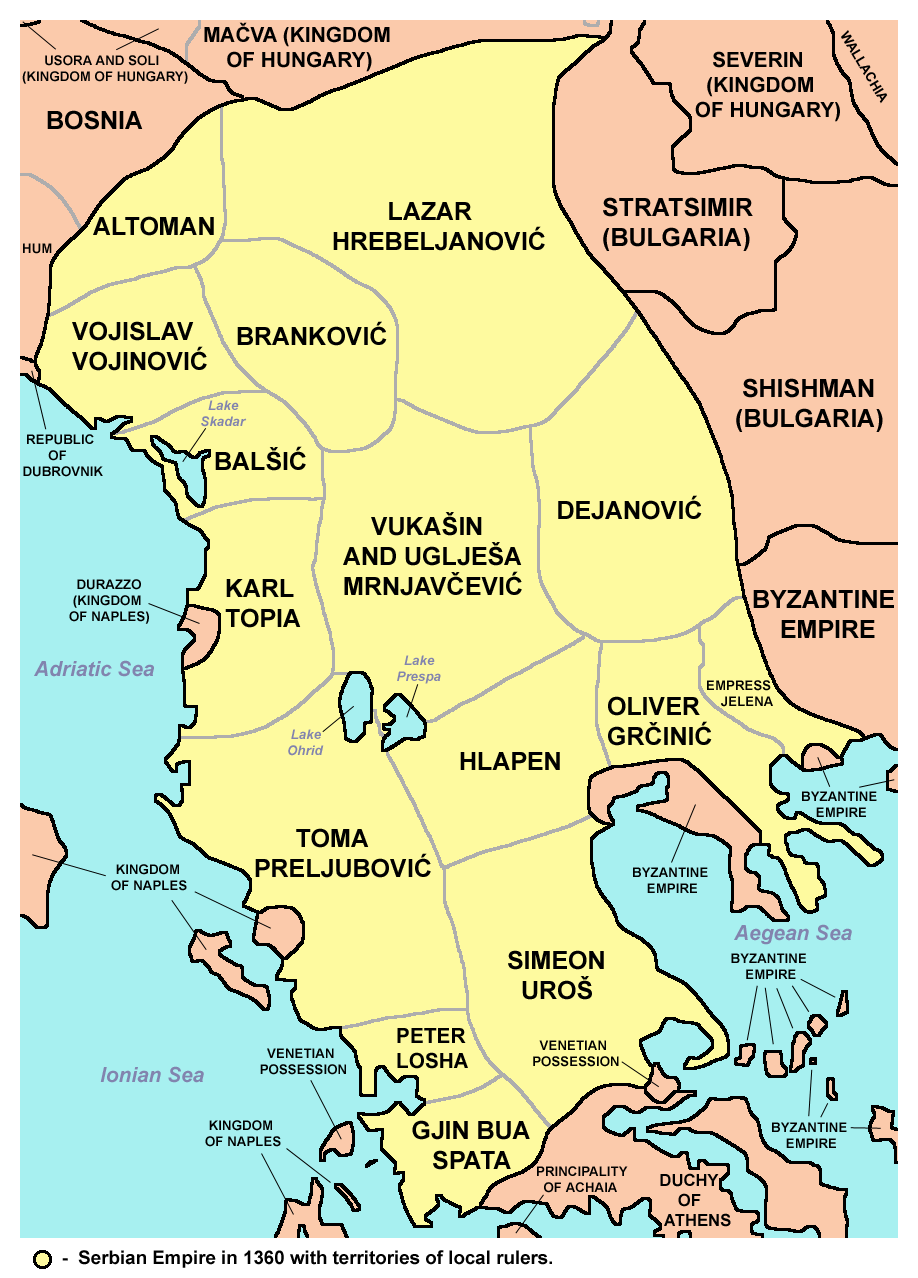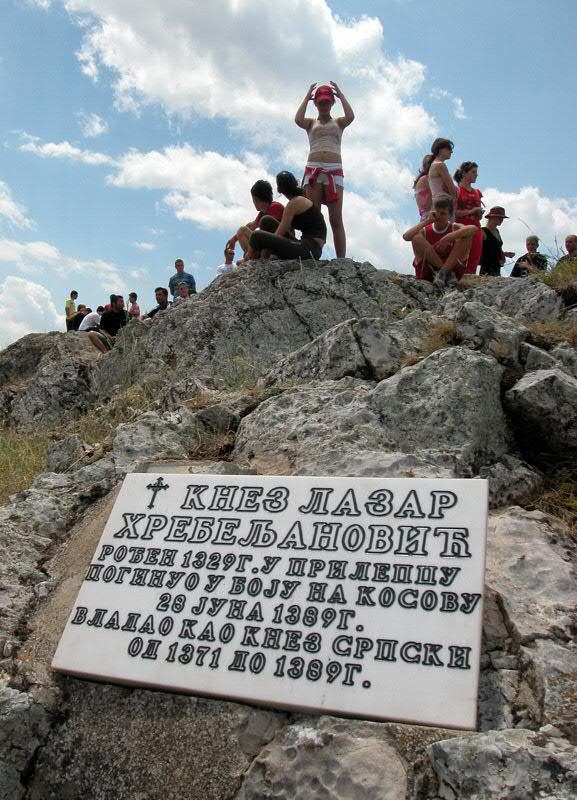|
Musa (magnate)
}, ''Moses''; 1363–81) was a Serbian nobleman who served Emperor Stefan Uroš V (r. 1355–1371), with the title of ''čelnik''. Musa married Dragana Lazarevic, the sister of Prince Lazar of Serbia. He is the founder of the Musić family, as father of Stefan, Lazar and Jovan. Jovan would later become the mytropolite of the Eparchy of Toplica. The province governed by Musa stretched over the Kopaonik massif, between Ibar and Lab. Little is known about him. He is believed to have been born in ca. 1330 and married Dragana in 1355 at latest. First mentioned in 1363 when he was appointed as governor of Brvenik. Before 1363 Musa was governor of Zvečan Zvečan ( sr-Cyrl, Звечан) or Zveçan ( sq-definite, Zveçani) is a town and municipality located in the Mitrovica District in Kosovo. As of 2015, it has a population of 16,650 inhabitants. It covers an area of , and consists of a town and .... Musa was last mentioned in 1381, he died some time before 1388, when his son Stef ... [...More Info...] [...Related Items...] OR: [Wikipedia] [Google] [Baidu] |
čelnik
''Čelnik'' ( sr-cyr, челник) was a high court title in the Kingdom of Serbia, Serbian Empire and Serbian Despotate. In its early form, the holder was entrusted with the security of property belonging to the Orthodox Church from the aristocrats (compare Catholic Vidame), so the holder appeared in the role of a judge or executor of the ruler's decisions, in disputes between the church and the nobility. At the beginning of the 15th century, during the Serbian Despotate, the title of ''veliki čelnik'' (велики челник, "grand čelnik") was the equivalent of count palatine and was the highest court title, with the title-holders holding great provinces, property and honours. History During the reign of King Stefan Milutin (r. 1282–1321), the title holder was entrusted with the security of property belonging to the Church from the aristocrats, so the holder appeared in the role of a judge or executor of the ruler's decisions, in disputes between the church and the ... [...More Info...] [...Related Items...] OR: [Wikipedia] [Google] [Baidu] |
Prince Lazar
Lazar Hrebeljanović ( sr-cyr, Лазар Хребељановић; ca. 1329 – 15 June 1389) was a medieval List of Serbian monarchs, Serbian ruler who created the largest and most powerful state on the territory of the disintegrated Serbian Empire. Lazar's state, referred to by historians as Moravian Serbia, comprised the basins of the Great Morava, West Morava, and South Morava rivers. Lazar ruled Moravian Serbia from 1373 until his death in 1389. He sought to resurrect the Serbian Empire and place himself at its helm, claiming to be the direct successor of the Nemanjić dynasty, which went extinct in 1371 after ruling over Serbia for two centuries. Lazar's programme had the full support of the Serbian Orthodox Church, but the Serbian nobility did not recognize him as their supreme ruler. He is often referred to as Tsar Lazar Hrebeljanović ( sr, Цар Лазар Хребељановић / ''Car Lazar Hrebeljanović''); however, he only held the title of prince ( sr, link= ... [...More Info...] [...Related Items...] OR: [Wikipedia] [Google] [Baidu] |
Musić Noble Family
The Musić ( sr-cyr, Мусић, Musići / Мусићи) was a Serbian noble house that served the Serbian Empire (1345–1371), and during its fall (1371–1389) it served Tsar Lazar's Serbia. The eponymous founder was ''čelnik'' Musa, who married Dragana Hrebeljanović, the sister of Tsar Lazar (r. 1371-1389). Stefan and Lazar Musić, the sons of Musa, held a region of roughly modern Raška municipality and north Kosovo. The brothers died fighting the Ottoman Empire in the Battle of Kosovo (1389). History They held a region of north Kosovo, around Ibar with the seat in Zvečan. Musa was given the estate by Emperor Stefan Uroš V (r. 1355-1371). They relocated their seat to Brvenik on the Ibar, due to the swapping of fortified cities with Vojislav Vojinović (around 1355-1363). Their province included the Kopaonik area (with mines), in the middle of the Ibar and Lab, and stretched from the Radočelo and Brvenička župa in the northwest, to the Brvenica tributary ... [...More Info...] [...Related Items...] OR: [Wikipedia] [Google] [Baidu] |
Stefan Uroš V
Saint Stefan Uroš V ( sr-cyrl, Свети Стефан Урош V, ; 13362/4 December 1371), known in historiography and folk tradition as Uroš the Weak ( sr-cyr, Урош Нејаки, Uroš Nejaki), was the second Emperor (Tsar) of the Serbian Empire (1355–1371), and before that he was Serbian King and co-ruler (since 1346) with his father, Emperor Stefan Dušan. Early life Stefan Uroš V was the only son of Stefan Uroš IV Dušan by Helena of Bulgaria, the sister of Ivan Alexander of Bulgaria. He had been crowned as king (second highest title) in the capacity of heir and co-ruler after Dušan was crowned emperor in 1346. Although by the time of his succession as sole ruler and emperor in 1355 Stefan Uroš V was no longer a minor, he remained heavily dependent on his mother and various members of the court. Reign left, 200px, Depiction in the Serbian Orthodox Monastery of Visoki Dečani, Serbia">Visoki_Dečani.html" ;"title="Serbian Orthodox Monastery of Visoki Dečani" ... [...More Info...] [...Related Items...] OR: [Wikipedia] [Google] [Baidu] |
Lazarević Dynasty
The House of Lazarević ( sr-Cyrl, Лазаревић, Lazarevići / Лазаревићи, ) was a Serbs, Serbian medieval royal family, which ruled Moravian Serbia and the Serbian Despotate. The dynasty began with Lazar Hrebeljanović, son of Pribac Hrebeljanović-a noble at the court of Dušan the Mighty. Lazar married Princess Milica, Milica, supposedly a member of the reigning Nemanjić dynasty, and was later given the title "Knez" by List of Serbian monarchs, Serbian Emperor Uroš the Weak. He gained lands in Central Serbia and through his ties with the Nemanjićs he became the regent of Moravian Serbia. In the Battle of Kosovo against the Ottoman Empire, Lazar was killed and Serbia became a vassal state, leading to the end of Serbian sovereignty. Monarchs Rulers of Moravian Serbia from 1371 to 1427. *Lazar Hrebeljanović (1371–1389) *Stefan Lazarević (1389–1427) Family tree *Pribac **Draginja, who married Čelnik Musa (magnate), Musa, founder of Musić noble family ... [...More Info...] [...Related Items...] OR: [Wikipedia] [Google] [Baidu] |
Lazar Of Serbia
Lazar Hrebeljanović ( sr-cyr, Лазар Хребељановић; ca. 1329 – 15 June 1389) was a medieval Serbian ruler who created the largest and most powerful state on the territory of the disintegrated Serbian Empire. Lazar's state, referred to by historians as Moravian Serbia, comprised the basins of the Great Morava, West Morava, and South Morava rivers. Lazar ruled Moravian Serbia from 1373 until his death in 1389. He sought to resurrect the Serbian Empire and place himself at its helm, claiming to be the direct successor of the Nemanjić dynasty, which went extinct in 1371 after ruling over Serbia for two centuries. Lazar's programme had the full support of the Serbian Orthodox Church, but the Serbian nobility did not recognize him as their supreme ruler. He is often referred to as Tsar Lazar Hrebeljanović ( sr, Цар Лазар Хребељановић / ''Car Lazar Hrebeljanović''); however, he only held the title of prince ( sr, link=no, кнез / '' knez'') ... [...More Info...] [...Related Items...] OR: [Wikipedia] [Google] [Baidu] |
Kopaonik
Kopaonik ( sr-cyr, Копаоник, ; sq, Kopaoniku) is a mountain range located in Serbia and Kosovo. The highest point is the Pančić's Peak with . The central part of the Kopaonik plateau was declared a national park in 1981 which today covers an area of . On the slopes of the mountain range there is a Kopaonik ski resort which is one of the largest in Southeast Europe. There are 25 ski lifts with capacity of 32,000 skiers per hour. Geography Stretching for in the north-south direction, between the rivers of Lab and Sitnica on the south and Jošanica on the north, Kopaonik is one of the largest and longest mountains in Serbia. It belongs to the region of Raška. The Kopaonik mountain massif (''Kopaoničke planine'') includes the mountains of Kopaonik, Željin, Goč and Stolovi. The Pančić's Peak, with , is the highest point of the mountain. Climate Kopaonik has a subalpine climate (Köppen climate classification: ''Dfc'') with fresh summers, and long, cold winters w ... [...More Info...] [...Related Items...] OR: [Wikipedia] [Google] [Baidu] |
Ibar (river)
The Ibar ( sr-cyrl, Ибар, ), also known as the Ibër and Ibri ( sq, Ibër, Ibri), is a river that flows through eastern Montenegro, northern Kosovo and central Serbia, with a total length of . The river begins in the Hajla mountain, in Rožaje, eastern Montenegro, and passes through southwestern Serbia and northern Kosovo, where it leads back into Serbia to flow into the West Morava river near Kraljevo, central Serbia. It belongs to the Black Sea drainage basin. Its own drainage area is , with an average discharge of 60 m³/s at the mouth. It is not navigable. Etymology The scholar Ejup Mushoviq theorized that the word derives from the Albanian ''i Bardhë'', meaning "white".' Professor Niko Zupančić has theorized that the word Ibar is related to the Basque word for "river" (''i-ba/r/i''), which is also how the Ebro river in Spain received its name. Other scholars have suggested that the name is derived from Greek, given that the river's ancient name was ''Hiberus''. ... [...More Info...] [...Related Items...] OR: [Wikipedia] [Google] [Baidu] |
Lab (river)
The Lab ( sr-Cyrl, Лаб) or Llap ( sq, Llapi), is a river in the north-eastern part of Kosovo. The long right tributary to the Sitnica river, it is the main river in the Llap (region) depression. Near its origin are remains of medieval palace of Serbian king Milutin (1282-1321) called Vrhlab (Serbian Cyrillic: , which means ''origin of the Lab''). Name etymology The etymology of the river's name is derived from a pre-Slavic form ''Alb'' that underwent linguistic metathesis within Slavic giving the final form as ''Lab''.Županić, Niko (1936). Značenje barvnega atributa v imeny ,,Crvena Hrvatska’’'. Etnolog. p. 362. "Na ozemlju Dukljaninovic Bete Hrvatske se je namreč nahajalo mesto Lab, a stara srbska država Raša se je po njem razprostirala ad Lapiam et Lap, kar gotovo meri na župo in reko Lab, pritok Sitnice na Kosovem polju. Tu je menda nastopila znana slovanska likvidna metateza alb > lab, ali je treba pripomniti, da so ti koreni predslovanski, morda celo predindoe ... [...More Info...] [...Related Items...] OR: [Wikipedia] [Google] [Baidu] |
Zvečan
Zvečan ( sr-Cyrl, Звечан) or Zveçan ( sq-definite, Zveçani) is a town and municipality located in the Mitrovica District in Kosovo. As of 2015, it has a population of 16,650 inhabitants. It covers an area of , and consists of a town and 35 villages. Zvečan is a part of North Kosovo, a region with an ethnic Serb majority that functions largely autonomously from the remainder of ethnic Albanian-majority Kosovo. According to the Brussels Agreement (2013), 2013 Brussels Agreement, the municipality should become a part of the Community of Serb Municipalities once they are established. History The town of Zvečan is located near Mitrovica, Kosovo, Mitrovica. It was mentioned for the first time in connection with the border clashes between the Serbs and Byzantine Empire, Byzantines between 1091 and Battle of Zvečan, 1094. There is also an inscription that Grand Prince Stefan Nemanja, after the victory over the Byzantines in 1170, ordered that a prayer for the successful outc ... [...More Info...] [...Related Items...] OR: [Wikipedia] [Google] [Baidu] |
14th-century Serbian Nobility
As a means of recording the passage of time, the 14th century was a century lasting from 1 January 1301 ( MCCCI), to 31 December 1400 ( MCD). It is estimated that the century witnessed the death of more than 45 million lives from political and natural disasters in both Europe and the Mongol Empire. West Africa experienced economic growth and prosperity. In Europe, the Black Death claimed 25 million lives wiping out one third of the European population while the Kingdom of England and the Kingdom of France fought in the protracted Hundred Years' War after the death of Charles IV, King of France led to a claim to the French throne by Edward III, King of England. This period is considered the height of chivalry and marks the beginning of strong separate identities for both England and France as well as the foundation of the Italian Renaissance and Ottoman Empire. In Asia, Tamerlane (Timur), established the Timurid Empire, history's third largest empire to have been ever establis ... [...More Info...] [...Related Items...] OR: [Wikipedia] [Google] [Baidu] |


.jpg)


